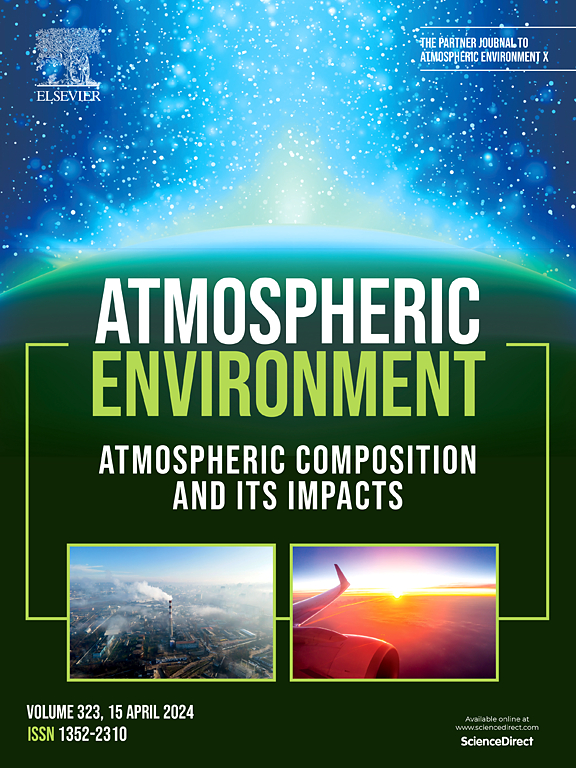Source identification of carbohydrates and polycyclic aromatic hydrocarbons in a rural area near the Plitvice Lakes National Park, Croatia
IF 4.2
2区 环境科学与生态学
Q2 ENVIRONMENTAL SCIENCES
引用次数: 0
Abstract
This study examines the levels and seasonal changes of organic compounds in terms of carbohydrates and polycyclic aromatic hydrocarbons (PAHs) in PM10 collected at a rural site near the Plitvice Lake National Park (Croatia) to determine their source in airborne particles. Mass concentrations of PM10 particles were higher during the summer compared to the winter season (14 ± 5.3 μg m−3 and 6 ± 3.4 μg m−3, respectively). Such seasonal variation is unusual for this part of Europe, where the winters are harsh and biomass for domestic heating is most common. The analysis of carbohydrates in PM10 revealed the presence of anhydrosugars, sugar alcohols, and monosaccharides throughout the sampling period. Anhydrosugars were the most dominant compounds despite the season. The highest average mass concentrations of 124.1 ± 100.06 ng m−3, 8.0 ± 5.55 ng m−3, and 7.0 ± 7.62 ng m−3 for levoglucosan (LG), mannosan (MNS), and galactosan (GA), respectively, were reached in the winter season. Sugar alcohols were most pronounced during the summer, while the levels of monosaccharides contributed evenly through autumn and summer. The levels of PAHs were higher during winter and lowest during the summer season. Their concentrations in PM10 were at least one order of magnitude smaller compared to carbohydrate concentrations. The highest average mass concentration was observed for benzo(b)fluoranthene (BbF) in spring (0.126 ± 0.068 ng m−3), pyrene (Pyr) in summer (0.038 ± 0.013 ng m−3), benzo(ghi)perylene (BghiP) in autumn (0.153 ± 0.107 ng m−3) and BbF in winter (0.283 ± 0.259 ng m−3). The annual average mass concentration of BaP was 0.086 ± 0.1028 ng m−3, which is lower than the European Union (EU) directive target value of 1 ng m−3. To determine the sources of organic compounds in airborne particles, different multi-statistical techniques were used; Spearman correlation, factor analysis, principal Component Analysis (PCA), as well as diagnostic ratio method, revealing the seasonal dynamics of various sources. The reason for these changes can be found in different human and nature activities in the rural background area. Data analyses indicated that in the spring season, there were mixed sources, including traffic, emissions from domestic heating or the combustion of grass/agricultural waste, and biogenic aerosols. In the summer, the dominant sources were biogenic emissions related to fungi spores and degraded material, biomass burning, and traffic. Vehicular emissions and biogenic sources were likely dominant at Plitvice Lakes during autumn, whereas domestic heating was the dominant source in the studied area during winter.

求助全文
约1分钟内获得全文
求助全文
来源期刊

Atmospheric Environment
环境科学-环境科学
CiteScore
9.40
自引率
8.00%
发文量
458
审稿时长
53 days
期刊介绍:
Atmospheric Environment has an open access mirror journal Atmospheric Environment: X, sharing the same aims and scope, editorial team, submission system and rigorous peer review.
Atmospheric Environment is the international journal for scientists in different disciplines related to atmospheric composition and its impacts. The journal publishes scientific articles with atmospheric relevance of emissions and depositions of gaseous and particulate compounds, chemical processes and physical effects in the atmosphere, as well as impacts of the changing atmospheric composition on human health, air quality, climate change, and ecosystems.
 求助内容:
求助内容: 应助结果提醒方式:
应助结果提醒方式:


